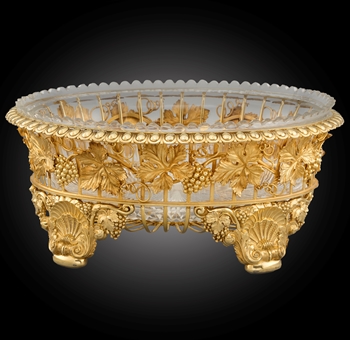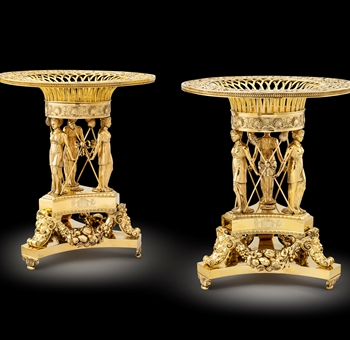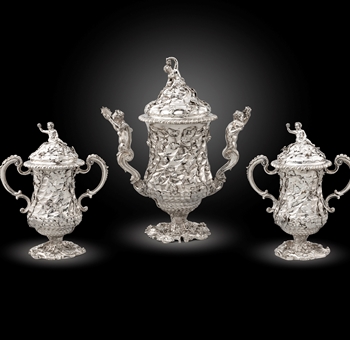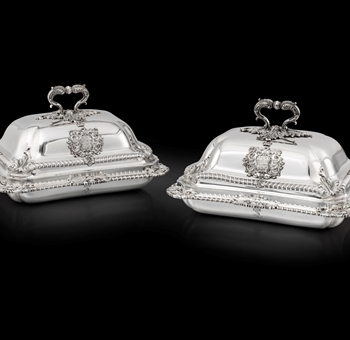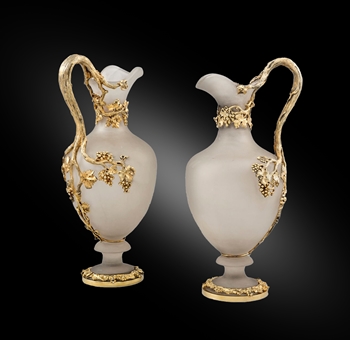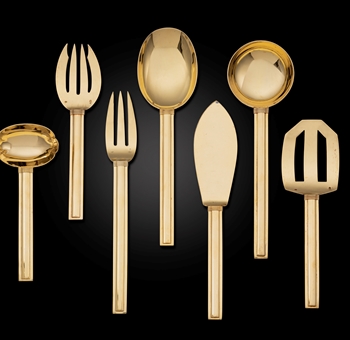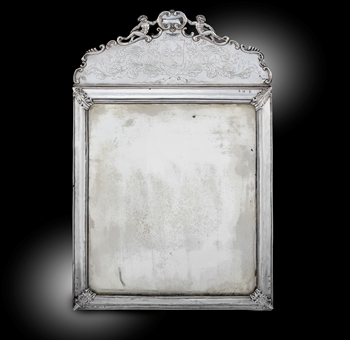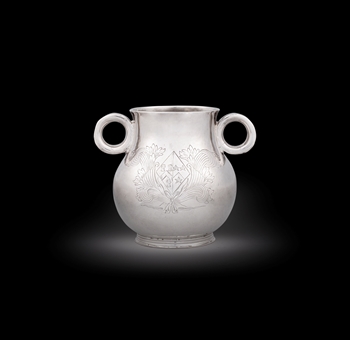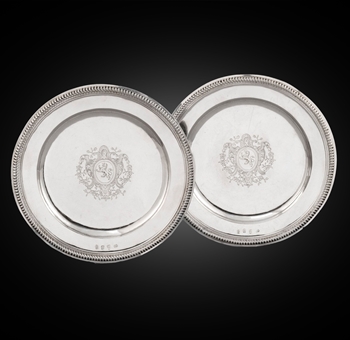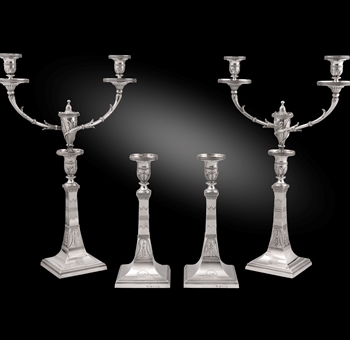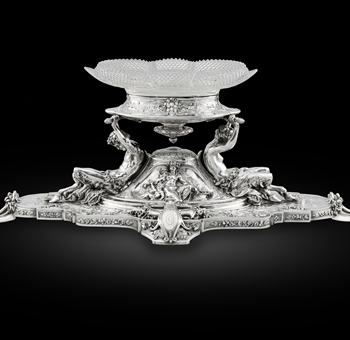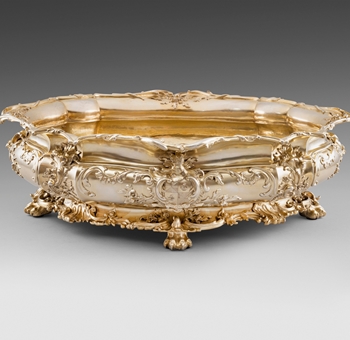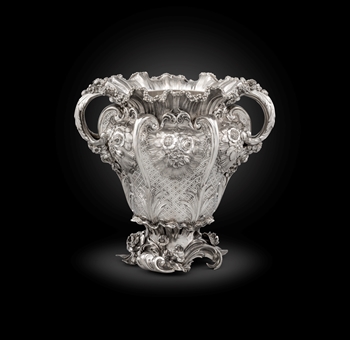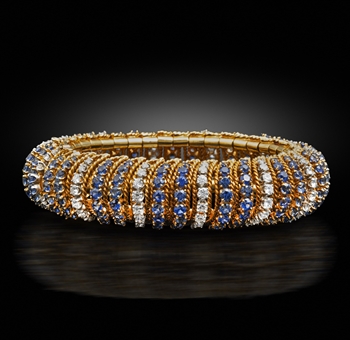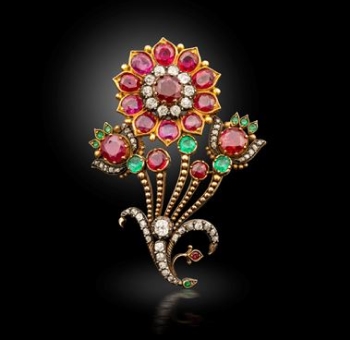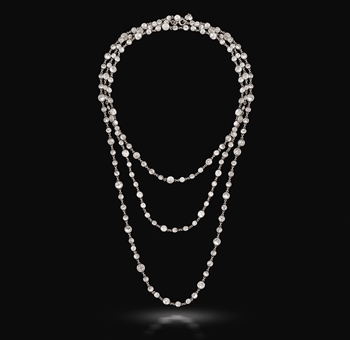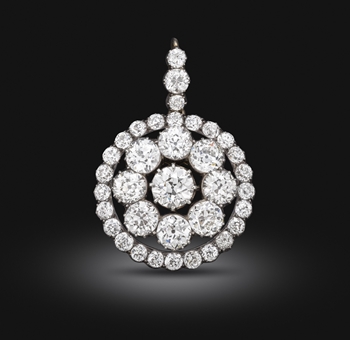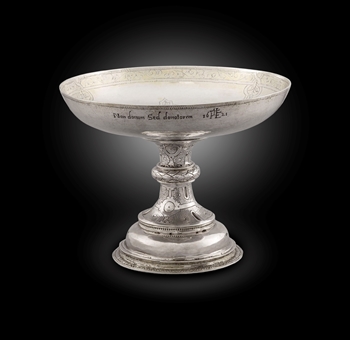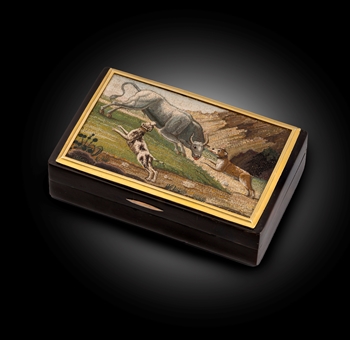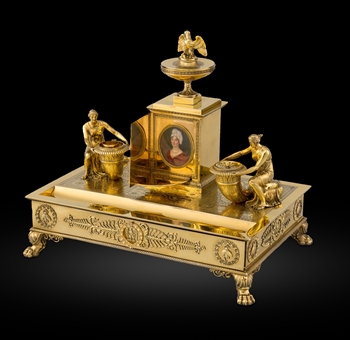 BACK TO LIST
BACK TO LIST
The Jolly Duchess: Harriot Mellon
This is the story of the illegitimate daughter of a strolling player who became the Duchess of St Albans and one of the richest women in Britain. Famously described by 14th Duke of St Albans as ‘a generous character and that is always a special quality’.
 William Beechey, Harriot Beauclerk (née Mellon), Duchess of St Albans, Oil on canvas, Circa 1815. Courtesy of the National Portrait Gallery
William Beechey, Harriot Beauclerk (née Mellon), Duchess of St Albans, Oil on canvas, Circa 1815. Courtesy of the National Portrait Gallery
Harriot Beauclerk, Duchess of St. Albans (née Mellon) was born in London in 1777. She was the daughter of a wardrobe mistress and actress in a band of strolling players. Harriot grew up surrounded by the group of talented performers. Her mother married violinist Thomas Entwisle who taught her how to sing and dance, the desire to perform running through her blood. The family went on to join the respected acting company owned by Thomas Bibby which toured the theatres of the North.
In 1787, Harriot made her debut playing ‘Little Pickle’ in The Spoiled Child at Ulverston. However, her major breakthrough came when she was spotted by playwright Richard Brinsley Sheridan. As a result she worked for a season at the magnificent Drury Lane Theatre in January 1795 as Lydia Languish in Sheridan’s The Rivals .Throughout her successful career she acted as an understudy to Dorothea Jordan and Sarah Siddons and was best remembered for her role as Volante in John Tobin’s The Honeymoon, performed in 1805.
 George Clint, Scene from John Tobin’s The Honeymoon, Oil on canvas, circa. 1835. Courtesy of The Victoria & Albert Museum
George Clint, Scene from John Tobin’s The Honeymoon, Oil on canvas, circa. 1835. Courtesy of The Victoria & Albert Museum
Mellon’s fame rose in 1815 when she married the banker Thomas Coutts. Whilst her acting career came to an end, she had found her perfect partner who she described as ‘the most perfect being that ever breathed’. Mellon had been Coutts’ mistress before his first wife, Elizabeth Starkey, passed away in 1815. As a result of the scandal their marriage was conducted in private so as not to upset his three daughters from his previous marriage. Thomas Coutts did all he could to protect his beloved from his daughter’s hostility. Together they threw lavish parties and entertained important guests such as Wordsworth and Samuel Rogers to their properties across the country, her favorite being Holly Lodge in Highgate.
Mellon’s fame rose in 1815 when she married the banker Thomas Coutts. Whilst her acting career came to an end, she had found her perfect partner who she described as ‘the most perfect being that ever breathed’. Mellon had been Coutts’ mistress before his first wife, Elizabeth Starkey, passed away in 1815. As a result of the scandal their marriage was conducted in private so as not to upset his three daughters from his previous marriage. Thomas Coutts did all he could to protect his beloved from his daughter’s hostility. Together they threw lavish parties and entertained important guests such as Wordsworth and Samuel Rogers to their properties across the country, her favorite being Holly Lodge in Highgate.

However, in 1827 Harriot married William Aubrey de Vere the 9th Duke of St Albans, who was 23 years her junior. This caused an outcry and Harriot became subject to a number of sarcastic caricatures and criticism.
 Henry Heath, The Wedding Day, Etching, 1827. Courtesy of The National Portrait Gallery.
Henry Heath, The Wedding Day, Etching, 1827. Courtesy of The National Portrait Gallery.
Her close friend Sir Walter Scott wrote to Harriot to congratulate her on her second marriage. Her reply to Scott was quoted in full in his journal for 30 June 1827:
"What a strange eventful life has mine been, from a poor little player child, with just food and clothes to cover me, dependent on a very precarious profession, without talent or a friend in the world – first the wife of the best, the most perfect being that ever breathed …and now the wife of a Duke! You must write my life… my true history written by the author of Waverley"
 Henry Fuseli, Harriot Mellon, Pencil, 1815. Courtesy of Lowell Libson.
Henry Fuseli, Harriot Mellon, Pencil, 1815. Courtesy of Lowell Libson.
Harriot was a keen collector amassing a fantastic collection of old master paintings and silver. She sat for some of the most important artists of the time including Sir William Beechey, George Romney and Sir Thomas Lawrence. On her death in 1830 she left to the Duke of St Albans £10,000 a year for his lifetime along with both the properties based in London. The rest of her fortune and estate worth approximately £1.8 million was left to Angela Burdett, the youngest of Thomas’ grandchildren.
The majority of her silver collection was placed in a vault at Coutt’s bank until 1914. On 14th May 1914 Christie’s, London held the Coutts Heirlooms sale including a service by Paul Storr after the designs by E. Hodges Baily. A number of Harriot’s pieces of silver have passed through the doors at Koopman Rare Art including a George III cheese dish made by Robert Hennell II in London 1812 which was sold to a private collection. Below are two items that were once in the collection of the Duchess of St. Albans and are now available at Koopman Rare Art.

This pair of George III candelabra stamped with the maker’s mark of William Pitts belonged to Harriot. They are elaborately cast and chased with lion masks, dolphins, eagles and dragons representing the four elements within swirling scrolls, flowers and rocaille on a matted ground. This pair of candelabra are initialled and not engraved with the full St Albans armorials, a testimony to her strength of character and independence.

This pair of Louis XVI French dishes on stands were also part of Harriot’s collection. The pair were made in Paris between 1785-1789 by Henri Auguste and Robert Joseph Auguste. Both the covers and bases are engraved with the coronet & monogram of Harriet Duchess of St Albans. A selection of wonderful pieces of silver which do not only represent some of the maker’s most prestigious and important pieces but also hold provenance relating to one of the richest female characters of the 19th century.
Visit our gallery Koopman Rare Art, The London Silver Vaults, 53/64 Chancery Lane, London, WC2A 1QS
For all enquiries please do not hesitate to call or email on:
020 7242 7624 / info@koopmanrareart.com




